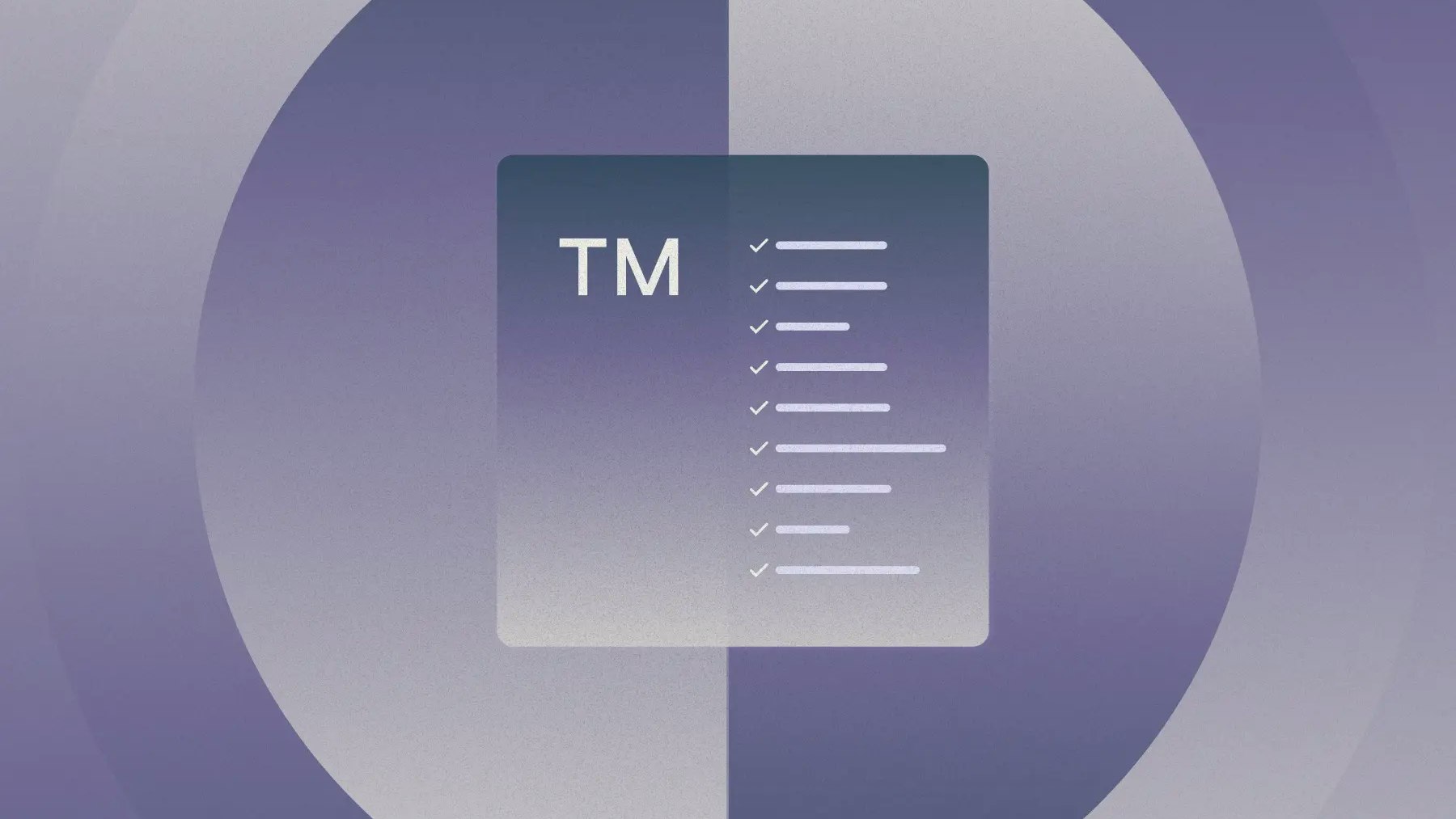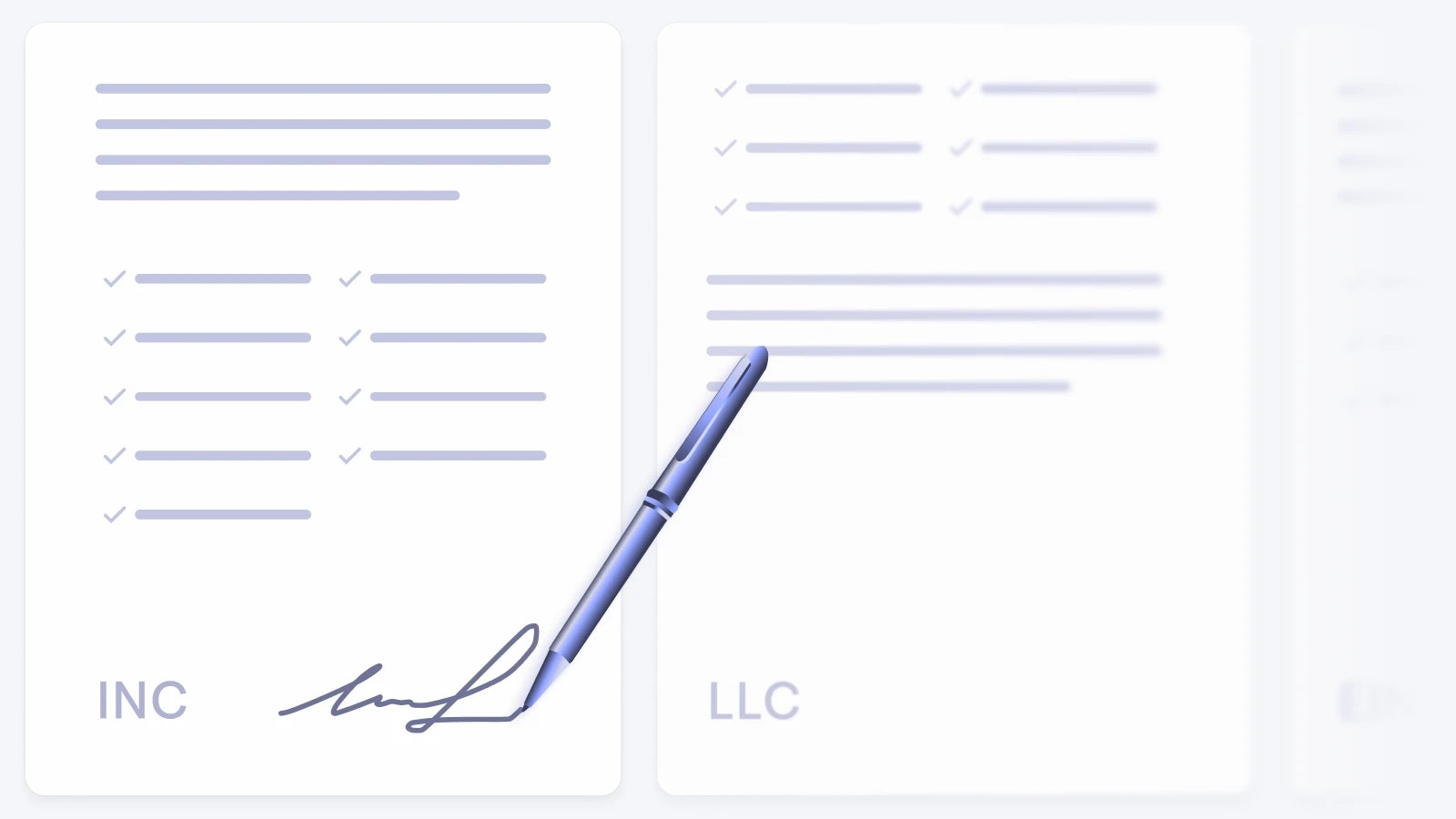How to trademark a company name

A trademark can protect your startup’s intellectual property including its phrases, designs, and logos from copycats. A trademark can also help your company build its brand and establish its presence in a market. In this article, we’ve outlined everything you need to know about the what, why, and how of trademarking a name.
What is a trademark — and what's the point of one?
A trademark is a form of protection for your company’s intellectual property, including words, phrases, designs, and logos. It also distinguishes your goods and services from others in the same industry.
A registered federal trademark provides this protection nationally. It costs a filing fee of $250 to $750 from the United States Patent and Trademark Office (USPTO). Your trademark will last 10 years and will need to be renewed at regular intervals for a renewal fee. The renewal fee varies depending on your trademark classifications, which we explore below.
A registered trademark bolsters your company’s brand recognition and protects your brand against copycats. If you’re hoping to grow your company, a trademark is one way to claim your piece of the market and legal landscape in advance.
Important trademark-related concepts
Like trademarks, there are other types of protection for intellectual property, each with key distinctions. We’ll outline these protections below.
- Common-law ownership: Common-law ownership is the assumed ownership you have over a name as soon as you start selling your product or service. It protects your company name like a trademark would, but is much more limited. Common-law ownership protects a name only within your geographic area, whereas registered trademarks offer protection country-wide. You indicate your common-law ownership with the trademark ™ symbol.
- Registered ® symbol versus trademark ™ symbol: As with common-law ownership, your company begins to use its trademark as soon as commerce starts. You can use a trademark ™ symbol even without registering it. Once registered, you can use the registered ® symbol to indicate a registered federal trademark. Some companies use both the registered and trademark symbols at once. These symbols can demonstrate your brand’s legitimacy to customers and investors.
- Service marks: Service marks are issued by the USPTO and are indicated as a symbol ℠ or with the letters SM. While trademarks protect products, service marks distinguish the source of a service. For example, a trademark can protect clothing; a service mark can protect a flight.
- Business name registration: When you form a company in the U.S., your business name is registered with the government, and you can apply for an Employer Identification Number (EIN). This process grants your business a variety of abilities, from opening a business bank account to filing taxes, but it doesn’t constitute trademark rights on its own.
- Domain names: Your customers will type your domain name into the address bar of a web browser to access your startup’s website, e.g. www.mercury.com. Registering a domain name with a domain registrar doesn’t grant you any trademark protection and you can even be forced to surrender the domain if it infringes on another trademark’s rights. For this reason, it’s prudent to get your trademark first and claim a domain name only once you’re certain of your trademark approval.
- Patents: Patents are also issued by the USPTO, and in the case of intellectual property, protect inventions. For example, if you create a new D2C fintech app with a proprietary algorithm, you’d get a patent to protect the unique series of steps that make up your algorithm. You won’t patent your business name, logo, or designs, since names aren’t considered inventions.
- Copyright: Copyrights are also issued by the USPTO, and in the case of intellectual property, protect original artistic or literary works. For example, if your D2C fintech app’s marketing team has launched ads on Snapchat and written a jingle for these ads, you can use a copyright to protect the jingle. You can’t use a copyright to protect your business name, logo, or designs.
- LLC: A Limited Liability Company (LLC) is a type of business structure in the U.S. Incorporating LLCs is faster than registering trademarks. You get company formation documents in as little as a few minutes, whereas trademarks take three to six months to process. However, LLCs don’t offer trademarked brand protection. If your goal is to begin operating quickly, LLC registration will get you started sooner; if you’d like your name to be protected before operating, registering a trademark first is your safest choice.
- Trade name: Also called a Doing Business As (DBA) name, a trade name is how your company is known to the public. For example, if your startup’s legally incorporated name is Stock and Trades Amplify Inc., but you use the name Stock Monster on your storefront sign and marketing material, the latter will be considered your startup’s trade name. You can trademark a trade name or DBA to protect it.
Why and when should you trademark a name?
Trademarks have several medium- and long-term benefits for your business beyond the purely legal elements. Trademarking is particularly helpful for your brand development.
- Brand recognition: When your customer base recognizes your brand and understands exactly what it promises, it helps with retention and growth. New customers are more likely to sign up because they’ve heard of the brand before. Old customers stick around for longer because your brand is trustworthy.
- Brand legitimization: Using the registered ® symbol can be a sign that your company deserves to be trusted and taken seriously. If you’ve made this investment into your business, customers are more inclined to believe that you’ve also invested time, care, and money into your product or service, making it a worthy purchase.
- Brand concentration: Your brand won’t be diluted by off-brand knockoffs if other brands can’t sell your product or use your name. You can enjoy the financial payoff of your brand’s integrity and prominence without worrying about imitators. Plus, your customers feel more confidence using your product or services when they’re not worried about fakes.
- Market dominance: Trademarking can ensure that your brand is the only one entitled to use your name. You'll have the government on your side if a competitor tries to sell similar products under a similar name in the future.
- Market reach: With a trademark that registers your rights on a national level, you’ll be able to scale into larger geographical regions than common-law ownership can protect against without fear of infringing on any existing trademarks.
Who should get a trademark?
While trademark registration is a useful option for any business, there are certain types of businesses that will find it particularly beneficial.
- Active business: Once you register a trademark, it must be used in commerce to be maintained. You’ll need to report to the USPTO at regular intervals to demonstrate your usage of the trademark. Many applicants submit evidence of the unregistered trademark already in use as part of their initial registration (this isn’t a requirement).
- Dispersed market: Since common-law rights only protect your company name in your immediate geographical location, it’s wise to get a trademark if you’re serving a market that spans multiple geographies. This way, your business won’t be susceptible to infringing on other trademarks.
- Diversified product: If your brand creates several distinct products, it can be useful for each product line to be trademarked as an extra layer of security. You might get one trademark for a D2C fintech app’s brand name, and specific trademarks for each device the app is built for.
How to trademark a business name
Below, we outline the steps to take to trademark a brand.
1. Check TESS
The Trademark Search System (provided by USPTO) is an online resource to investigate whether the trademark you’re interested in is already in use or is too similar to an existing trademark. If your trademark is too similar, an application for it will likely be rejected as an infringement on an existing trademark. When checking for similarities, be sure to check both names and meanings.
- For example: if SuperCart is for online grocery shopping and SuperKart is for premium go-karts, the names would likely be too similar despite having different meanings. Similarly, SuperCart and MegaShop might be considered too similar in meaning if both companies are for online grocery shopping, even though the names are adequately different.
2. Complete the application
You can apply with your unregistered trademark already in use or you can apply with the intent to use it soon. The key is to show that your trademark is actively used in commerce in order to keep it.
Here is what you’ll need to provide on your application:
- Your personal name and address
- Your personal citizenship and legal entity
- A name and address for future correspondence, which can be different from the applicant if need be
- A drawing of the proposed mark (if there’s no design and you’re applying specifically for a name, you’ll only type in the name)
- A thorough description of the proposed mark
- A specific list of services or goods covered by the trademark application
- The class of services or goods
- An example of the mark in use as well as the date it was first used (if you’re applying before it has been put in use, indicate that in this section)
- A dated signature from you or an authorized representative
- The fee, which varies based on the type and number of classes included on the application
3. File
There are two options for filing your application with the USPTO’s Trademark Electronic Application System (TEAS): TEAS Plus and TEAS Standard. These options exist to service different trademarking needs which differ by classes of goods and services.
TEAS Plus | TEAS Standard |
|---|---|
Has preset options from the trademark ID manual for the most common types of filings | Has customizable options for more unique filing needs |
Costs $250/class of goods/services | Costs $350/class of goods/services |
Lower rate of rejections; more likely to be approved | Higher rate of rejections; less likely to be approved |
Looking for help setting up your business?

Types of trademark classifications
There are 45 different trademark classifications. You’ll need to add a class for every use case for your trademarked name. For example, if you’re running a D2C fintech app, the app is one class. If you wanted to sell merchandise with your app brand logo on it, that’s another class. Every additional classification you add to your filing increases the cost of your application.
You’ll get a receipt from the USPTO with a serial number to track the status of your application. Use the Trademark Status & Document Retrieval Portal (TSDR) to do so. The application takes between three to six months to be processed.
Knowing whether it’s time to trademark or not will depend on your company’s brand needs. Always be sure to speak with an attorney or other trademark law professional if you’re unsure of what’s best for your company.
Want to hear directly from a founder? Watch our video with Mango Puzzles co-founders Kemal Didić and Svet Lovoukhin on how they set up their business and brand:



